 Back to the Be Inspired Blog
Back to the Be Inspired Blog
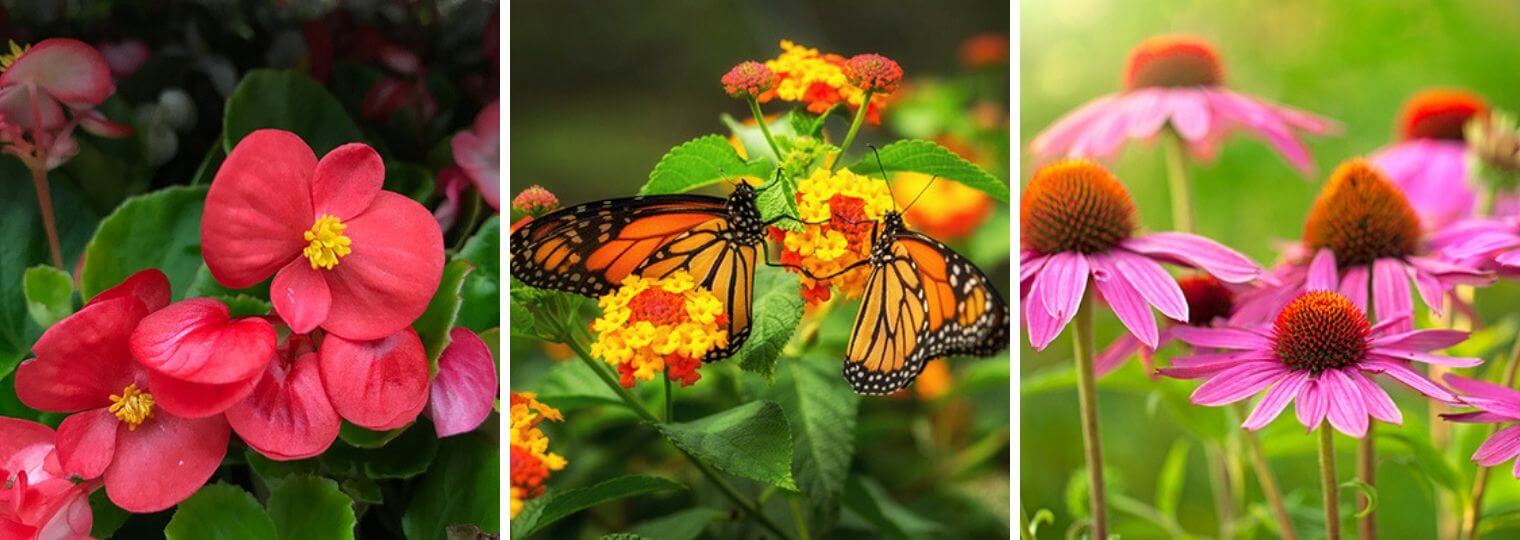
The Best Plants to Handle California’s Summertime Heat
Summers in California’s Mediterranean climate are stressful for garden plants that lack heat-resistant qualities. However, landscaping with species from other hot or dry environments can keep your garden vibrant as ever.
As we approach the hottest days of the year, water-stress and solar radiation become ever-present threats. Exposed areas without shade, those parts of your garden that qualify as, “full sun,” are at the most risk. Sun-proof your yard with flowers, herbs and shrubs that are naturally equipped to beat the heat.
What Makes Heat-Resistant Plants Ideal for a Full-Sun Garden?
Which natural qualities come together to help a plant thrive in full sun? Heat-resistant species usually come from parts of the world near the equator. Plants that originated in equatorial regions of Africa, Asia and Latin America can survive a wide variety of conditions that would often kill species from cooler environments. Because of their adaptive traits, they tolerate direct sun without drooping or withering. In fact, some can only reach their full potential in direct sun, bursting into bloom this time of year.
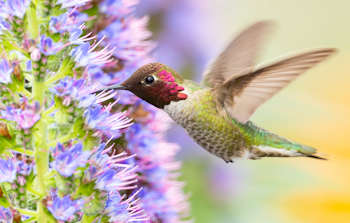
Traits that many of these species share include:
- Bright or light-colored flowers: High levels of brilliantly colored antioxidants in petals allow the flowers to survive incredible amounts of solar radiation without withering. According to the Berkeley Lab, bright pigments like carotenes protect plants from the sun.
- Waxy or hairy leaves: Waxy or hairy coatings on leaves keep water in while shielding the green parts of the plant from ‘burning out’ as they produce nutrients and oxygen. Hairs can also act as a sort of sunscreen, guarding the fleshy parts of a plant from full-strength UV rays, according to the Record Courier.
- Thin, tough stems: Plant stems are like inflatable bendy straws.Water stress, created by high temperatures, can make plants go limp, which makes it even harder for them to suck water up and distribute it to the places it needs to go. Firm, thin stems keep plants upright, without exposing much surface area to water loss.

Top Heat-Resistant Plants for Your Summer Garden
SummerWinds has compiled a list of some of our favorite beautiful and resilient plants that thrive in hot temperatures. This guide will fill you in on how these incredibly varied flowering plants can give your yard new life this season.
6 - Heat-Resistant Plants in the Aster Family
This family of complex-yet-classic flowers grow in every corner of the world, taking up sunny or high-exposure niches wherever plant life exists. Asters are characterized by spreading petal crowns and thin, hairy green portions. Their delicate appearance and hardy nature make them ideal plants for spots in your garden that receive full sun.
1. Zinnias
Zinnias are a group that originally came from Latin America. According to the Denver Post, these lush-petaled asters love the summer heat. They bloom June through November in an array of fruity hues from deep, dark pink to honeydew green.
2. Purple Coneflower (Echinacea purpurea)
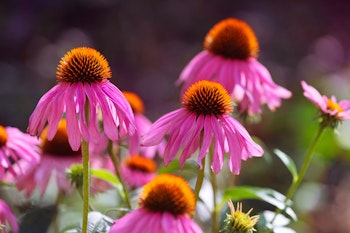
Tolerant of poor soils and dry weather, this heat-resistant plant shows only minimal leaf-wilt under even the most arid conditions, according to Ohio State University. Bright green, hairy stems contrast with pink-lavender blooms and a central grouping of red-brown disc flowers make this species at once colorful and understated.
3. Blanket Flower (Gaillardia species)
According to The Spruce, blanket flowers are native to the southernmost parts of North America. Their name describes their slow spread from a single individual to a ‘blanket’ of ground cover. Fond of well-drained soil and full sun, this heat-resistant group of flowers flourish in hot weather.
4. Black-eyed Susan (Rudbeckia species)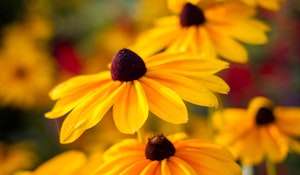
Black-eyed Susan’s are defined by their goldenrod ray flowers that stretch out from a central dark-brown cone of disc flowers. These unmistakable asters self-seed in full sun. They need soil temperatures of at least 70 degrees to germinate, according to The Old Farmer's Almanac.
5. Cosmos
Pairing a color range that rivals echinaceawith the delicate petals of a poppy, the cosmo is iconic among wildflowers. According to the American Meadows blog, cosmos strongly prefer full sun conditions and warm temperatures. Cosmos are, however, intolerant of intense heat and can benefit from partial or temporary shade throughout the day.
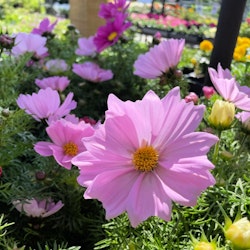
6. “Hawaiian Blue” Ageratum, or Floss Flower
According to SFGate, this Latin-American native relishes dry soil and full sun. Plant this variety of floss flower for a splash of shy, cool color among the bold, warm-colored blooms typical of many summer garden blooms.
4 - Pollinator Favorites For Your Garden
With brilliant colors, irregular floral shapes and delicate foliage, these pollinator plants will bring bees, butterflies and beauty to your garden. While less heat-resistant species retire their blooms until spring, these flowering gems will burst into full glory at the height of summer.
1. Egyptian Star Cluster (Pentas lanceolata)
Native to east Africa, these perennials grow in vibrant pink clusters of five-petaled flowers. Their fuzzy green leaves are bright green on top and almost silvery underneath, supported by thin, woody stems. Pentas flowers attract butterflies throughout their long bloom season, according to The Spruce.
2. Lantanas
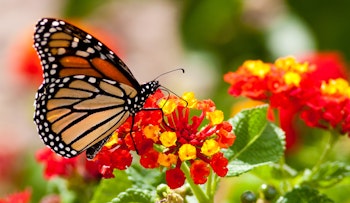
According to Southern Living, lantana is a favorite with butterflies. Native to the tropics of Africa and the Americas, this flowering shrub stays green the entire year. It also attracts hummingbird traffic while it blooms throughout the warmer part of the year, according to Sunset.
3. Penstemons
This diverse group boasts pink to purple trumpet-shaped flowers that open wide to welcome bees and hummingbirds into your garden. According to Garden Design, penstemons are ideal for supporting a wide range of pollinators through summer’s long days of sunlight. Plentiful in both pollen and nectar, these gorgeous plants are sure to add flare, and attract wildlife, to any garden.
4. Liatris Blazing Star, or Gayfeather
Blazing star flowers is characterized by feathery, purple floral spikes and thin, grass-like foliage. This late-season bloom is able to support pollinators through the hottest months into autumn, according to the Gardening Channel.
3 - Heat-Resistant Plants with Showy Flora
Hailing from all over the midline of the globe, these equatorial splendors blaze back with color at the sun beats down on them.
1. Madagascar Periwinkle (Vinca species)
Hailing from southern Africa, this five-petaled flower is perhaps most heat-resistant plant you can add to your garden. According to How Stuff Works, Madagascar periwinkle comes in hues ranging from white to deep purple. Another versatile quality of this plant is that it stands up well to humidity as well as intense heat.
2. Celosia
According to the Encyclopedia Britannica, over 40 celosia species are native to regions throughout Mexico. It’s fiery orange to purple spikes make them an eye-catching addition to any garden. Like many of its relatives in the Amaranth family, celosia is self-seeding and does well even in poor or rocky soils.
3. Waxed Begonia
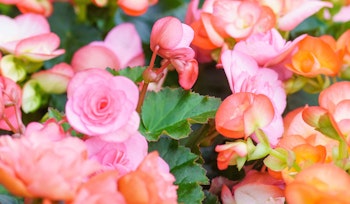
This Brazilian native handles heat and humidity with similar fortitude as the Madagascar periwinkle. A thick, waxy coating on its leaves and bright petal coloration protect it from the harsh rays of the sun while a woody stem keeps it from losing vigor under humid conditions. This incredible ground cover prefers full sun to even the most partial shade, according to Gardener’s Path.
3 - Heat-Resistant Plants That Grow Into Shrubs
Heat-resistant shrubs are vital for providing shade to less tolerant species. Choose from these exposure-equipped plants to guard your garden during those bright summer afternoons.
1. Viburnum Shrubs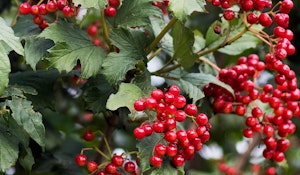
Common throughout Africa’s Atlas Mountains, viburnum species also do well throughout North America. Subtly hairy leaves, white flower clusters and striking red to black berries are the hallmarks of this group of heat-resistant plants, according to the Fine Gardening blog. Species in this group grow between four and 15 feet high, enabling them to provide life-saving shade to neighboring plants.
2. Sage Tree (Salvia arborescens)
According to the National Gardening Association, the sage tree can reach heights of 12 feet and does quite well in full sun. It is also attractive to hummingbirds and flowers in the late part of the growing season. Sage trees can be a saving grace to plants that need partial shade, as well as pollen-seeking wildlife, in the late summer and early autumn.
3. Yucca
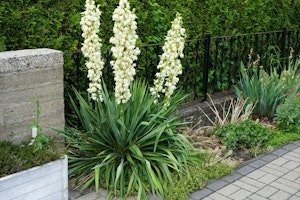
This desert native is basically indestructible. Some yucca species can withstand high-heat, freezing temperatures and even wildfire. According to SFGate, yucca does best in full sun and well-drained soils. There are varieties and species suited to every soil type, and therefore, every Bay Area garden!
* Plants recommended may vary by location and time of year. Contact your local SummerWinds Nursey for availability or substitution.
How To Incorporate Heat-Resistant Plants Into An Established Garden
Gardens are intricate ecosystems that often have a strong aesthetic value as well. Follow these five easy steps to decide where and how to introduce heat-resistant plants into your existing garden.
- Supplement areas of exposure or seasonal die-off with heat-tolerant species.
- Diversify each planted area in your garden with a mix of full-sun and partial-shade plants.
- Watch where the sun hits your garden throughout the day.
- Use heat-resistant plants to shade more sensitive species which face exposure risk.
- Add heat-resistant plants where you want more variety in color or foliage type.
Consult The Experts At SummerWinds
If you have questions about how to keep your garden blooming all year long, come in and ask one of our gardening experts! Visit us at any of our 5 California locations, or keep an eye on our class schedule for more garden inspiration.

